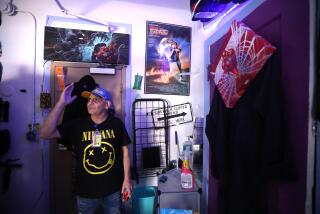El Proyecto Looks to Expand Operations
- Share via
The devastation and desperation wrought by the Northridge earthquake has spurred a human-services group to expand its plans for a needy neighborhood.
The El Proyecto del Barrio clinic on Van Nuys Boulevard, a fixture in the Pacoima area for more than a decade, was nearly destroyed by the Jan. 17 temblor.
Now, the organization’s board of directors has decided moving back in is not enough. They want to purchase or construct their own building, said Corinne Sanchez, president and CEO of the group.
“What happened was we wanted to get back to where we were, but we said, ‘Let’s be better than we were,’ ” said Sanchez. “It’s something the board has been talking about for a few years. This just kicked it in.”
Building inspectors have restricted access to the clinic building, which is now being used only to store supplies, Sanchez said. In the meantime, doctors have been treating about 50 patients a day from a motor home, according to clinic Director Corrie Alvarez.
In the weeks immediately following the quake, medical personnel used the borrowed motor home parked in front of the shattered office to treat more than double their normal caseload of clients, for quake-related injuries, illnesses and stress.
El Proyecto provides a variety of programs aimed at problems such as AIDS, pregnant women and troubled youth, and does not usually give away food or clothing. But it did both during the earthquake crisis, drawing as many as 400 people per day to the Pacoima clinic.
Sanchez said the overwhelming demand for help following the quake reaffirmed her group’s commitment to the neighborhood.
“It’s a helpful situation for the community, because it’s drawn more attention to its long-term needs,” she said.
It could take more than a year to either purchase the repaired building or find another prospect, Sanchez said. In the meantime, the health clinic--which has operated out of its rented quarters for the past 14 years--will have to work in a modular office similar to a portable classroom.
The group must first obtain funding through the Federal Emergency Management Agency; next it must get permission to open a new clinic from the California Department of Health Services.
Shortly after the quake, state health officials promised to supply a portable clinic within two weeks--until they found out the process was more complicated, Sanchez said.
“I think they meant well, but the reality is they couldn’t do it,” she said. “It’s all time. In the meantime, what do you do? We just struggle with what we have.”
More to Read
Sign up for Essential California
The most important California stories and recommendations in your inbox every morning.
You may occasionally receive promotional content from the Los Angeles Times.











